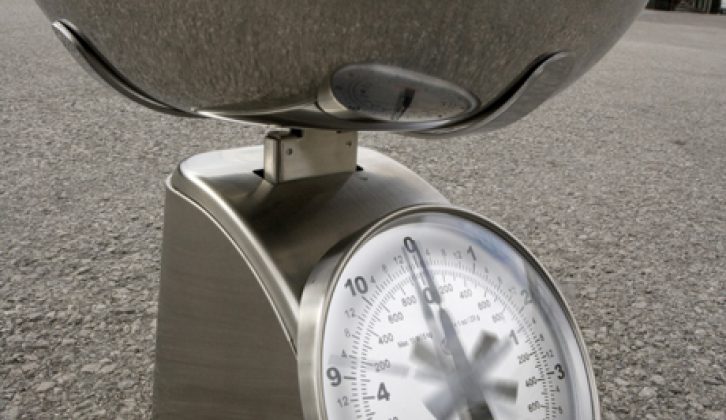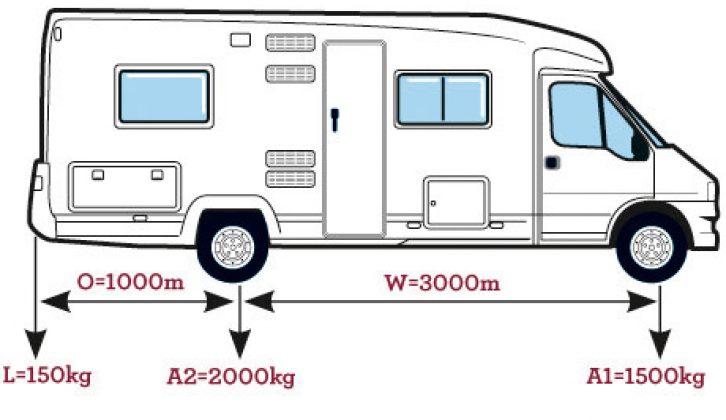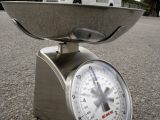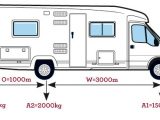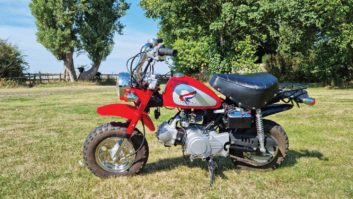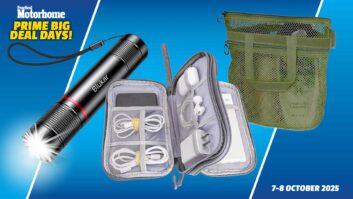Exceeding your payload can affect your motorhome’s stability and stopping distances, and could land you with a fine or invalidate your insurance.
Definitions
Payload is the weight of equipment and belongings you can carry in your motorhome. This figure is the combined weight of (1) the Essential Habitation Equipment (EHE), which includes gas cylinders and leisure batteries; (2) any optional equipment added to the ’van, such as towbars, solar panels and bike racks; (3) anything you carry inside the ’van, on the roof, or on a rear rack.
Maximum Technically Permissible Laden Mass (MTPLM): the maximum the motorhome can weigh and still be legal to drive. You’ll find this figure on your vehicle’s weight plate (see below), sited under the bonnet or inside a cab door.
Mass in Running Order (MIRO): the weight of the ‘van as it left the factory, with standard furniture inside, a full fuel tank and a nominal driver weight of 75kg.
To calculate a motorhome’s payload, subtract the MIRO from the MTPLM.
How much payload do I need?
Add up the weight of occupants you’re likely take on tour with you, then allow the following for all the camping gear and equipment you’ll also need:
- Rising-roof campervan: 150kg
- Panel van/coachbuilt: less than 6.25m, 300kg; 6.25-7.5m, 450kg; greater than 7.5m, 600kg.
Check that this figure does not exceed the payload of the ’van you want to buy.
How do I lose weight?
If you think your ’van may be overweight when in full touring mode, take it to a weighbridge and find out. To cut weight, start by taking everything out of your ’van, and only put back what you have used in the past year (except for safety equipment and your first-aid box). If in doubt, leave it out! Before putting it back, weigh each item on bathroom scales and list it on a spreadsheet: this will make it easier to watch your weight in the future.
Ask yourself…
- What accessories do I need?
- What sort of touring will I do? Long trips need more payload than short ones.
- What might I bring back from my trip? (For example, a crate of wine will be heavy.)
- Is the MTPLM over 3500kg? If so, and you didn’t pass your driving test until after 1 January 1997, you can’t drive it.
Rear loading
Before fitting a rear rack to your ’van, consider the following:
[tl:gallery index=1 size=460×277]
A1 = existing front axle load
(before adding on the new rear load)
A2 = existing rear axle load
(before adding on the new rear load)
L = weight of new rear load
W = wheelbase (the distance between the front and rear axle centre-lines)
O = overhang (the distance from the rear axle centre to the centre of mass of the new rear load).
Add the figure for the new rear load, and carry out the following calculations:
- New front axle load (new A1) = A1 – [L x (O ÷ W)]
- New rear axle load (new A2) = A2 + L + (A1 – new A1).
For example, take a ’van with a current front axle load (A1) of 1500kg and a rear axle load (A2) of 2000kg (see diagram). The scooter and its rack have a total mass of 150kg, the vehicle’s wheelbase (W) is 3000mm and the overhang (O) is 1000mm. Put those figures into the above equations and the new front axle load will be: 1500kg – [150 x (1000 ÷ 3000)]. This works out at 1500 – 49.95 which is a new front axle load of 1450.05kg. Now that we have a new A1 figure, we can move on to the second calculation to get the new rear axle load: 2000 + 150 + (1500 – 1450.05) is a new load of 2199.95kg. In other words, the scooter and rack would add nearly 200kg to the back axle, while taking almost 50kg off the front axle. You will need to compare these figures to the maximum axle loadings shown on the vehicle plate. If your new rear axle load is greater than that on the plate, then you cannot fit the rack and motor scooter.
More information
- Vehicle Operator and Services Agency (www.vosa.gov.uk, tel 0300 123 9000)
- Driver and Vehicle Licensing Agency (www.dvla.gov.uk, tel 0870 240 1651)
